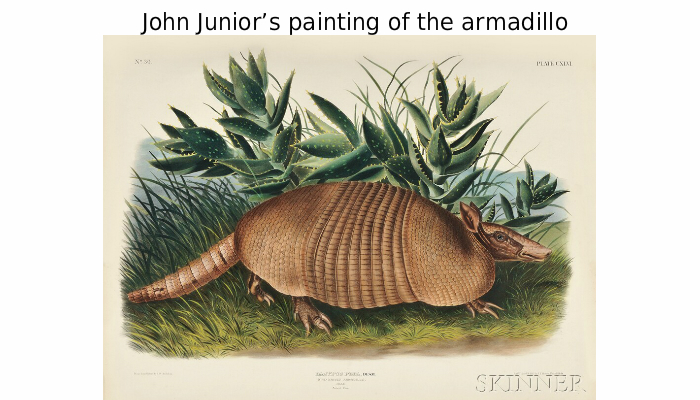Audubon’s Mammals: A Different Review
On January 4th I posted a blog about how after JJ Audubon had successfully completed his famous bird folio, he became engaged with a project to do the same for North American mammals. I put a rather positive spin on the whole enterprise because it was successful, as measured by the fact that it continues to be reprinted even today, 170 years later. For my story, go to Audubon’s Mammals.
Interestingly, the Smithsonian Magazine in their March issue also carried this storyline, and their author put a rather negative and critical spin on it. He noted that after JJ ventured to Fort Union, located in the Dakota Territory, he lost interest in hunting and didn’t venture that often from the fort. And I understand why. JJ went out west to experience nature at its grandest and wildest, and when he got there he found an abundance of rotting buffalo carcasses, shot for entertainment, and men determined to also shoot all the wolves, bears, eagles, pumas, and even the smaller creatures, which he had come to experience and document. And the noble Plains Indians, which George Catlin had painted only a decade before, were already decimated by smallpox, starvation, and alcohol. And he intended his folio to be the field guide for future generations to share his wonder; and here the whole ecosystem was unravelling before his very eyes. JJ took to drinking more than just at happy hour.
The Smithsonian story also complained that half of the mammals in the folio were painted by JJ’s son, and these were not the high quality of his father’s. However, I have thought it absolutely amazing that the young man, with little experience, could step into his father’s shoes and do a more-than-adequate job. For example, the armadillo painting is John Junior’s and to my eyes it proved very accurate when compared to the roadkill specimen that I brought to Prairie Preview several years ago.
In his final years, JJ slipped more often into what we today might diagnose as depression, then into dementia, all aggravated by his finding solace in drinking. But by then the team had become family. JJ’s two sons had married collaborator John Bachman’s two daughters, and they all followed through to accomplish publication.
The Smithsonian review manages to wrap up their story with faint praise: “Like the journey on which it is based, the Quadrupeds is an imperfect thing that fell short of its goal, an incomplete but beautiful farewell from an American master.”
Incomplete or not, it has enduring value, and yet another edition is soon to be released, this time by Auburn University and Giles Publishers.
Tags: armadillo, Audubon, Lon Drake, Prairie Preview


